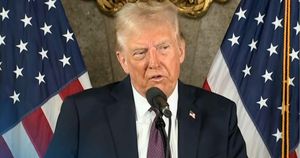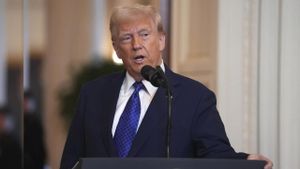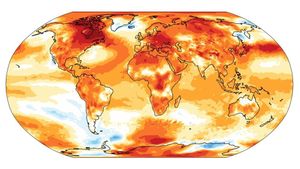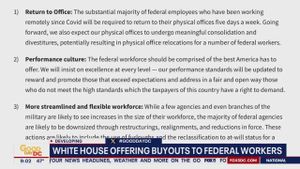The recent announcement by the Trump administration about imposing new import tariffs has sent shockwaves through European markets, including the Amsterdam stock exchange, which is now bracing for significant declines.
According to reports, just hours before the market's opening on Monday, futures on the AEX index indicated losses of about 2.7%. This dramatic response follows the weekend's announcement by President Donald Trump, who revealed plans to implement hefty 25% tariffs on imports from Canada and Mexico and an additional 10% on certain Chinese products. These new measures were justified by Trump as necessary to counteract what he perceives as inadequate border protections, claiming, "Canada and Mexico do too little on border protection, allowing drugs and illegal immigrants to easily enter America."
The ramifications were immediate; after the news broke, the S&P 500, which had been trending positively, reversed course and fell nearly 1% before closing down 0.5%. Meanwhile, the AEX index fell sharply, registering approximately 1.4% at 908.60 points shortly after opening. Major corporations such as ArcelorMittal and leading chip manufacturers saw losses hitting as high as 7% as investors processed the uncertainty introduced by the tariffs.
This turmoil isn't restricted to just the Dutch market. Other European indices—including those in London, Frankfurt, and Paris—also experienced declines, some nearing 2%. The widespread apprehension about the potential onset of a trade war is palpable and has been echoed by leaders from affected nations.
Canadian Prime Minister Justin Trudeau wasted no time responding to Trump's announcement, cautioning against the inflationary impact the tariffs could have on consumers, stating, "The Canadian Prime Minister warned the American public about the inflationary impact of a trade war." His comments highlight just how serious the situation could become for average citizens if trade relations sour significantly.
Over on the Asian front, the Japanese Nikkei index was among the largest losers, dropping about 2.7%, impacted heavily by major automakers like Toyota and Honda. Similarly, South Korea's major exporters, such as Samsung and Hyundai, faced pressure as the ripple effects of the tariffs sparked fears of reduced global trade volumes.
Market analysts are keeping a close eye on the situation, particularly on key indicators such as the purchasing managers' indices for industry, which were set to be released later. These indices carry significant weight and are anticipated to reflect the underlying health of economies worldwide, especially now amid heightened market volatility.
Despite the unpredictable market atmosphere, traders are responding as best they can. The dollar rose approximately 1.2% against the euro, indicating some investors are seeking refuge from the turmoil by switching their focus to currency trading. Meanwhile, cryptocurrencies also took hits, with Bitcoin dropping approximately 4% to around $94,000.
The state of oil prices offers yet another layer to this complex economic picture: U.S. oil futures actually saw gains, rising close to 2% amid fluctuated trading conditions. With geopolitical concerns morphing daily, the situation remains fluid.
The interconnectedness of global markets means events such as these have far-reaching consequences, and experts warn of the potential for continued disruptions across various sectors if relations between the U.S. and its trading partners worsen.
What lies ahead remains uncertain. Economists are weighing the long-term impacts of the tariffs—questions loom over how these actions will alter global trade dynamics and whether retaliation will escalate the conflict. Keep marks on your calendars for upcoming industry reports and U.S. economic signals as they may provide clarity on what action steps should be taken next.
With tensions mounting, one must wonder: where will this lead, and what does it mean for the everyday investor and consumer?



